2024-09-02
If you think you have “a cold” right now, it’s almost certainly COVID-19 and not a cold.
Nothing Else is Circulating (Much)
There’s very little circulation of any upper respiratory diseases except COVID-19 right now. The BC Pathogen characterization page stopped reporting in April because the trend was going so low, but you can see from this graph how low “everything but COVID-19” was last summer compared to the winter waves. “Everything else”, is seasonal, and it is highly likely that “everything else” is at similar levels to last summer. This graph of “everything else” shows that summer 2023 levels of “everything else” — influenza, rhinovirus, enterovirus, RSV, adenovirus, human metapneumovirus, and the four “common cold” coronaviruses — were about one-tenth of the winter levels:
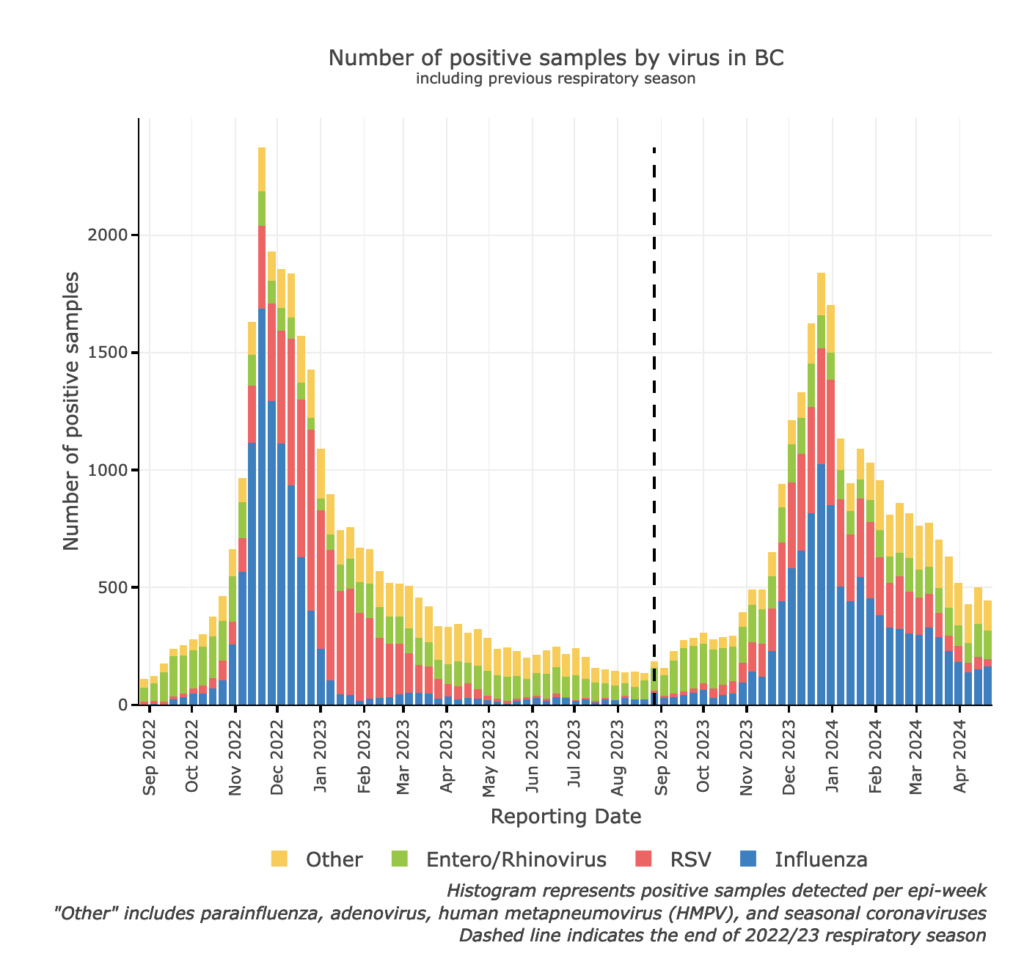
We are in a COVID-19 Wave
However, there is a lot of COVID-19 circulating right now. I can’t give you data on what has been happening in BC with COVID-19 because we haven’t gotten any COVID data for a month, but the US is still publishing some information, though it is a little hard to interpret:
- There been almost no testing for COVID cases for the past few years, so hospitalizations were a much more reliable indicator of COVID-19 case levels.
- Unfortunately, the US CDC stopped requiring hospitals to provide hospitalization data. This means that only about a third as many hospitals are reporting information as there were in May 2024.
Here is a graph of US hospitalization rates per 100,000 people from the US CDC:

(I believe that the number of hospitalizations is normalized to the number of people who live in the hospital’s region, but I’m not 100% sure of that. If it is normalized to the number of people in the US, then the current numbers should be multiplied by about three to adjust for only a third of the hospitals currently reporting. Either way you slice it, however, a lot of people are getting hospitalized, and even more are getting sick.)
Closer to home, the King County WA (i.e. Seattle) COVID-19 page shows hospitalization levels close to last winter’s peak:
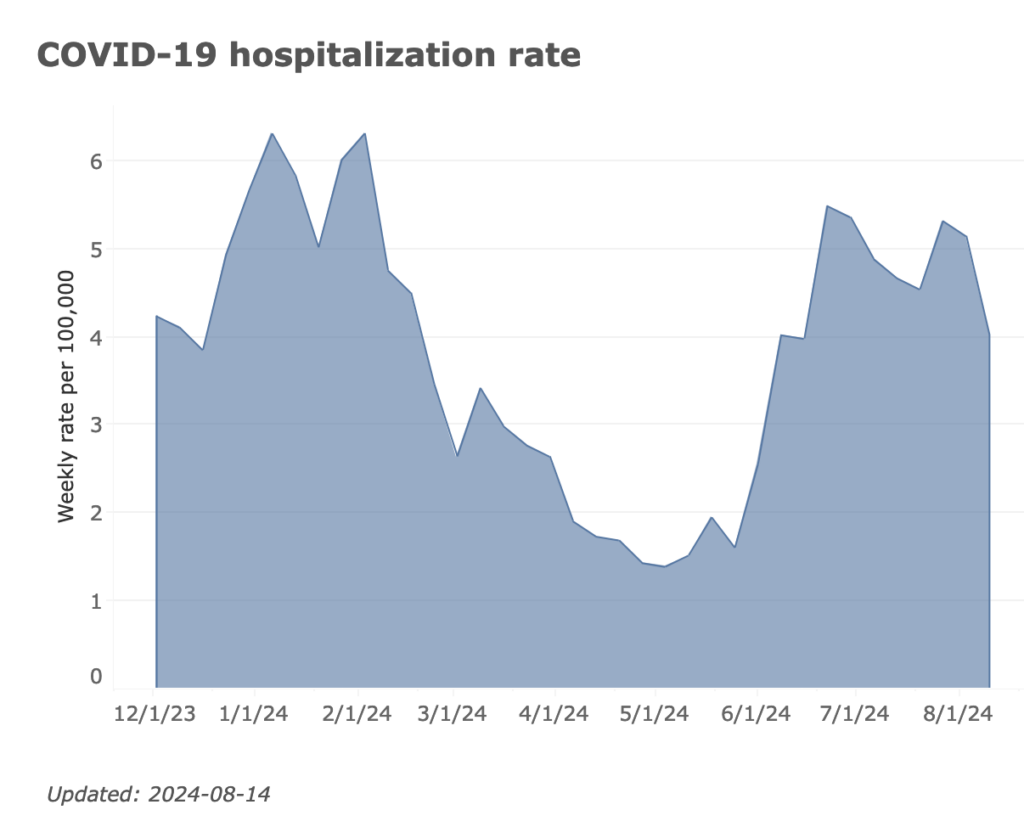
I do not know if the number of hospitals in King County reporting has changed over time.
I also don’t know how many COVID-19 cases there are per hospitalization, and if that has changed in the past year. I suspect that there are more cases per hospitalization as repeated vaccinations and infections change susceptibility to severe COVID, but I don’t know that.
It’s not Influenza
If your “cold” hit you very hard, it’s even more likely that it’s COVID-19.
Once, before the pandemic, someone told me “If you feel like you got hit by a truck, it’s the flu. If you don’t feel like you got hit by a truck, it’s a cold.” Nowadays, COVID-19 is highly variable: it can feel like “hit by a truck” or not. However, it is still true that if you feel like you got hit by a truck, the odds are extremely high that it is either influenza or COVID.
However, there is almost no influenza circulating right now — even less than the “common cold” pathogens. While BC is publishing very little about summer pathogens, the US is still publishing data on influenza, and they are showing extremely low levels of influenza right now. Here is data on US influenza rates from public health testing:
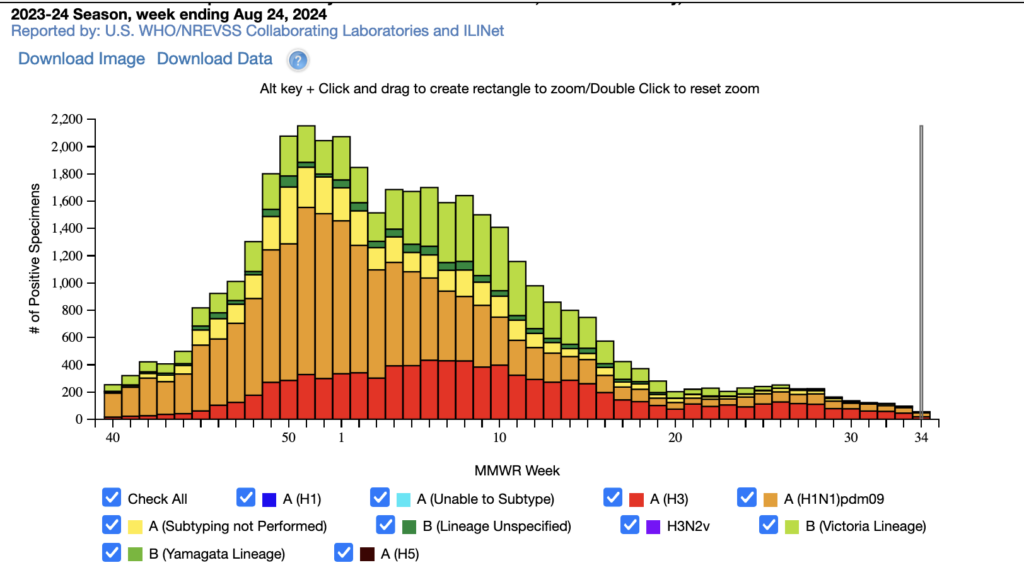
Influenza tests from just the US Pacific Northwest (this time from clinical tests) also shows almost no influenza currently:

You have COVID-19
While it is true that the number of cold and influenza cases right now is greater than zero, the number of COVID-19 cases is far, far higher — so the chances that you have COVID-19 are much higher than having influenza, rhinovirus, enterovirus, RSV, adenovirus, human metapneumovirus, or the “common cold” coronaviruses. You have COVID-19 until proven otherwise.
Addendum 2024-09-26: Information from the Viral Pathogens Characterization Page, which finally got updated today, shows how much more COVID-19 there was this summer.
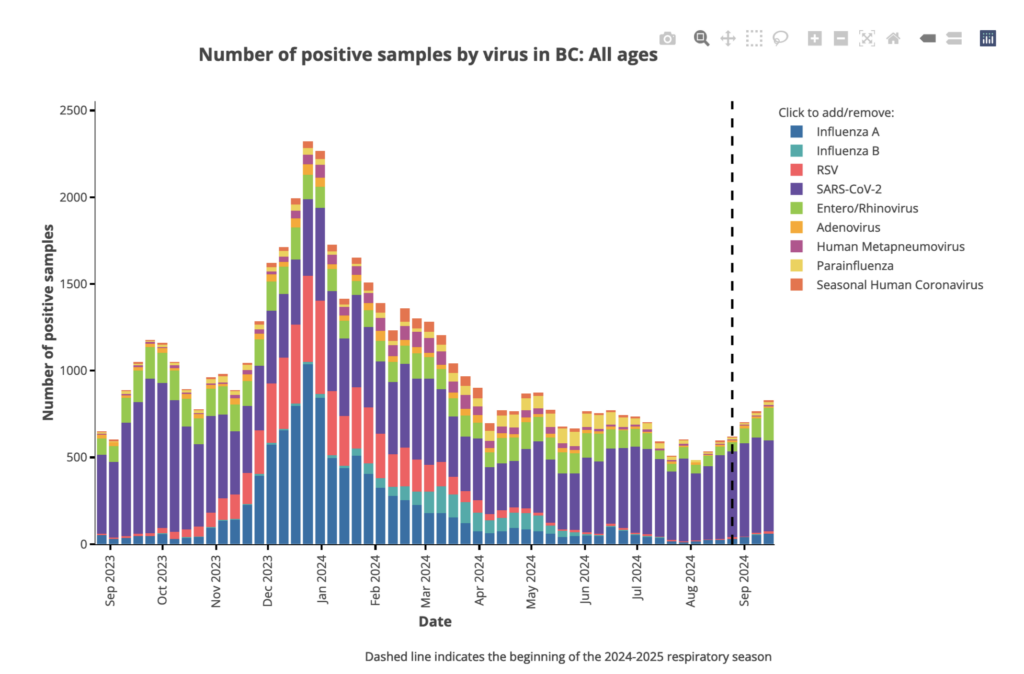
For example,I pulled the following values for positive tests from the interactive graph on the pathogens page for the week ending 3 August 2024:
- COVID-19: 477
- Enteroviruses/Rhinoviruses: 66
- Influenza A: 13
- RSV: 4
- Adenovirus: 13
- Human metapneumovirus: 5
- Parainfluenza: 21
- Human “common cold” coronaviruses: 1
- Influenza B: 0
So the score is COVID-19: 477, everything else: 123. In that week, you were 3.87 times as likely to have COVID-19 as any other respiratory pathogen. Furthermore, if it was at all annoying, then it was probably COVID-19, flu, or RSV. In that case, it was COVID-19: 477, flu/RSV: 17, so it was 28 times more likely to be COVID-19 than the flu or RSV.
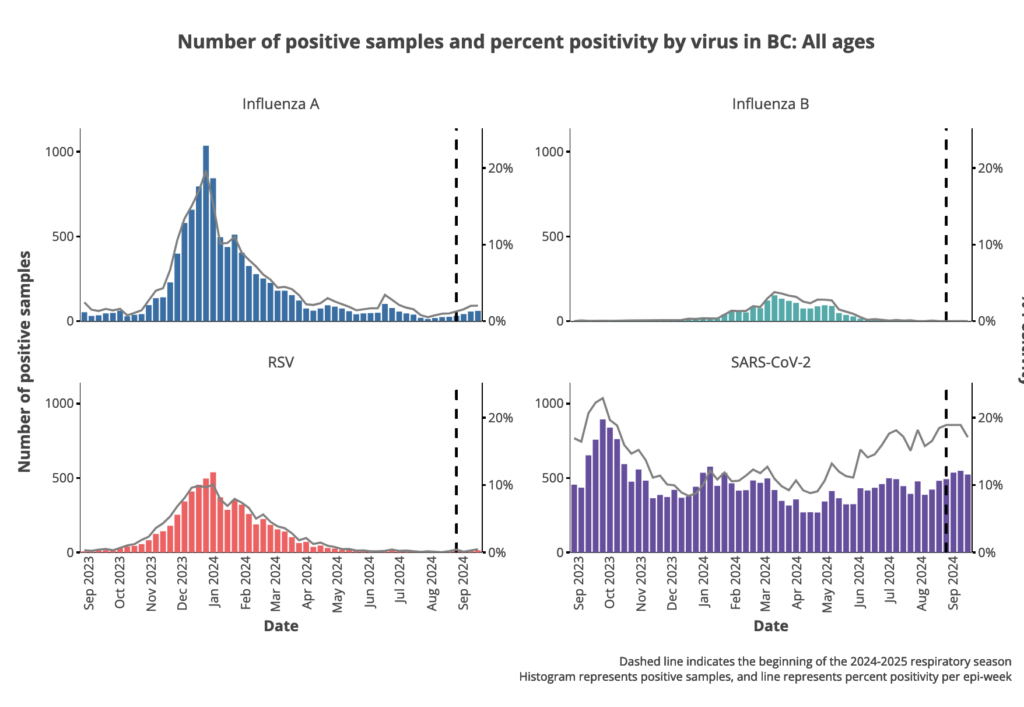

2 comments
Comments are closed.